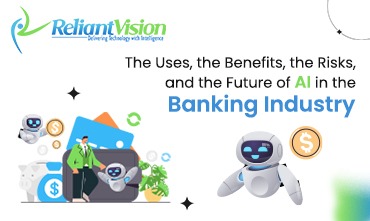Artificial Intelligence (AI) has become increasingly important in the banking industry over the past few years. Banks are using AI technology to improve efficiency, reduce costs, enhance customer experiences, and increase security. Here are some ways AI is being used in the banking industry:
- Fraud detection: Banks are using AI algorithms to detect fraudulent transactions in real time. Machine learning models are trained to recognize patterns of behavior that deviate from normal customer activity and alert bank employees when suspicious activity is detected.
- Chatbots: Many banks are using chatbots to handle customer inquiries, such as account balance inquiries, transaction history, and general customer service queries. Chatbots can quickly respond to customer inquiries 24/7, reducing customer wait times and improving overall customer satisfaction.
- Personalized services: Banks are using AI to offer personalized services to customers based on their behavior and preferences. AI-powered systems can analyze customer data to provide personalized financial advice, investment recommendations, and product suggestions.
- Risk assessment: AI is being used to assess credit risk and predict loan default rates. Machine learning algorithms can analyze vast amounts of data to provide banks with a more accurate assessment of a customer’s risk level, allowing them to make better lending decisions.
- Anti-money laundering: Banks are using AI to detect and prevent money laundering activities. Machine learning algorithms can analyze transaction data and identify suspicious patterns of behavior, alerting banks to potential money laundering activities.
- Predictive analytics: Banks are using predictive analytics to analyze customer behavior and predict future trends. AI algorithms can analyze customer data to predict future spending patterns, allowing banks to offer tailored products and services.
Benefits of Artificial Intelligence (AI) in the banking industry
The use of Artificial Intelligence (AI) in the banking industry offers numerous advantages, including:
- Increased efficiency: AI can help banks automate manual processes, such as customer service inquiries and transaction processing, reducing the need for human intervention and increasing efficiency.
- Improved customer experiences: AI-powered chatbots can provide 24/7 customer service, reducing wait times and improving overall customer satisfaction. Personalized services can also be offered, providing customers with tailored financial advice and investment recommendations.
- Enhanced security: AI can help banks detect and prevent fraud and money laundering activities, reducing financial losses and protecting customer data.
- More accurate risk assessments: AI can analyze vast amounts of data to provide banks with more accurate risk assessments, allowing them to make better lending decisions.
- Cost savings: By automating processes and improving efficiency, banks can save money on labor costs and reduce the need for physical infrastructure.
- Better decision-making: AI-powered predictive analytics can help banks analyze customer behavior and predict future trends, allowing them to make data-driven decisions and offer relevant products and services.
- Increased competitiveness: By leveraging AI technology, banks can gain a competitive edge by offering better services, improving customer experiences, and reducing costs.
Limitations of AI in the banking Industry
AI offers many advantages to the banking industry, but there are some challenges and limitations that need to be considered. These include a lack of data quality, limited human interaction, security risks, full-range regulatory compliance, high cost, ethical considerations, and limited applicability. Banks need to ensure that the benefits of implementing AI outweigh the costs.
Future of AI in the Banking Industry
AI is becoming increasingly important in the banking industry, with trends such as increased use of predictive analytics, adoption of explainable AI, expansion of chatbots and virtual assistants, greater use of biometric authentication, advancements in natural language processing, increased focus on cyber security, and collaboration between banks and fintech companies. These trends are expected to shape the future of AI in the banking industry, allowing banks to offer more personalized products and services.
Conclusion: Reliant Vision uses AI in revolutionizing the banking industry in many ways, from fraud detection to customer service. Reliant Vision uses AI in banking transforming the industry, providing customers with better services, efficiency, and profitability, making it an essential tool for banks to succeed in the digital era.

